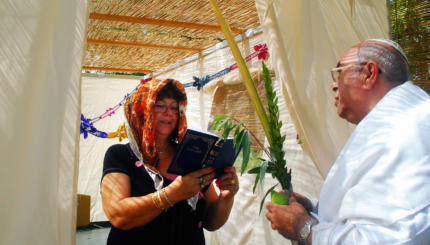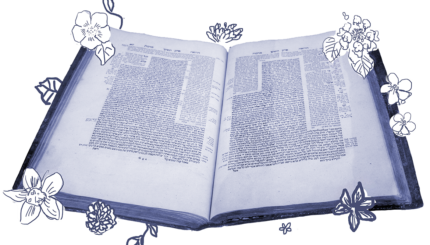Sukkot begins at sunset on Wednesday, October 12, 2011. Its celebration continues on Thursday, September 23, 2010, and lasts through sunset on Wednesday, October 19, 2011 (when Shemini Atzeret and Simchat Torah, the festivals that conclude , begin). Reform communities celebrate Sukkot from sunset on October 12, 2011, until Tuesday, October 18, 2011.
What is Sukkot?
Sukkot is known as the “Festival of Tabernacles” or the “Feast of Booths.” It is one of the three Harvest Festivals in Judaism, along with Passover and Shavuot. During Sukkot, it is customary to construct and live in a temporary booth called a sukkah, with a ceiling made of special branches of leaves.
What are some Sukkot customs and practices?
In addition to building and spending time in a sukkah, there are other rituals for Sukkot. Every morning, we shake the lulav and etrog. In Temple times, Sukkot was also the time of the Water Drawing Ceremony.

Help us keep Jewish knowledge accessible to millions of people around the world.
Your donation to My Jewish Learning fuels endless journeys of Jewish discovery. With your help, My Jewish Learning can continue to provide nonstop opportunities for learning, connection and growth.
• Watch a funny episode about shopping for a lulav and etrog in Hasidic Brooklyn.`
• Get a glimpse inside a Sukkot market in Israel.
What foods are traditionally eaten on Sukkot?
• Sweet and Savory Stuffed Prunes
• Stuffed Pumpkin
• Stuffed Cabbage Rolls for Simchat Torah
etrog
Pronounced: ETT-rahg, Origin: Hebrew, a citron, or large yellow citrus fruit that is one of four species (the others are willow, myrtle and palm) shaken together as a ritual during the holiday of Sukkot.
Hasidic
Pronounced: khah-SID-ik, Origin: Hebrew, a stream within ultra-Orthodox Judaism that grew out of an 18th-century mystical revival movement.
lulav
Pronounced: LOO-lahv (oo as in boo), Origin: Hebrew, a bundle of branches representing three species -- willow, myrtle and palm -- which are shaken together with the etrog on Sukkot.


